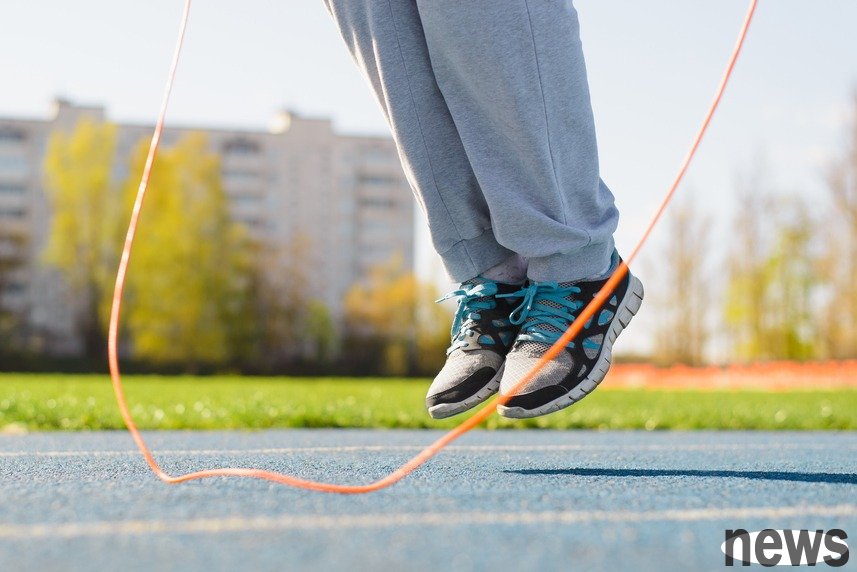If you cannot truly enjoy life, what is the meaning of extending your life? Nutritionist Sydney Nitzkorski shares diet and sports options that can be done now in their new book The Complete Bone and Joint Health Plan will help maintain a good qualit...

If you cannot truly enjoy life, what is the meaning of extending your life? Nutritionist Sydney Nitzkorski shares diet and sports options that can be done now in their new book The Complete Bone and Joint Health Plan will help maintain a good quality of life in their old age. According to CNN, most people do not know that bone density (BMD) peaks at around 30 years of age. After that, it is important to maintain BMD and reduce bone loss. Another contemplational misunderstanding is that it is believed that cardiovascular exercise is enough to maintain activity, but strength training and light striking movements are also important, and those over the age of 30 need these movements to reduce bone loss.
Nizkorsky said that as a nutritionist, she found that people lacked the concept of how much they consume, and most of them had insufficient intake. She said that the body cannot produce the required calcines, not only for bones and teeth, but also for the heart, muscles and nerve functions; if the calcines are insufficient, the body will use the bones to store calcines to meet the needs.
Do you need to take calcium health food?Nizkolski pointed out that food is the best source of calcium and health food is a secondary choice. She suggested tracking the intake for a week and then making adjustments. Adults need 1000 to 1200 mg of calcines per day; high-quality sources include milk, reinforced plant milk, cauliflower, kale, and sardines and cherry fish.
Westin suggests that the super food bok choy is the green vegetable with the highest bioavailability of calcium; a cup of milk contains 300 mg of calcium, which has a bioavailability of 30%, while a cup of cabbage contains 160 mg of calcium, which has a bioavailability of 55%.
The relationship between inflammation and healthWestin said that inflammation can damage the soft bones, causing pain in the relationship, and chronic inflammation will accelerate the relationship degeneration; anti-inflammatory nutrients, such as omega-3 fatty acids and ginger, can be used to obtain anti-inflammatory nutrients, such as omega-3 fatty acids and ginger, which can help relieve pain and kidney dysfunction.
Nitskorski said that the reason she likes to recommend anti-inflammatory foods is that they have many other benefits, such as reducing the risk of heart disease, prolonging life, helping digestion and providing more energy.
She noted that anti-inflammatory diets contain rich lean protein quality, which can be animal-based, such as fat-free or low-fat dairy products, eggs, fish, chicken or hot chicken, or plant-based, such as beans, lentils, soybeans, and pea protein. Anti-inflammatory diets also include healthy fats such as olive oil, fish, walnuts, flax seeds, chia seeds and role seeds. The types of ginger plants include garlic, ginger, leek and ginger. They are delicious plants with a variety of anti-inflammatory properties; in addition, there are various spices such as ginger, chili, black pepper and ginger.
Westin said dietary standards from fruits, vegetables, beans and all grains are equally important, which can provide short-link fatty acids, and higher short-link fatty acid content is related to lower inflammation. In addition, it is also important to avoid or restrict inflammatory ingredients such as processed meat, red meat, fried foods, fats and processed carbohydrates.
Whistan points out that combining resistance training and impulse movements are key, with the goal of combining several of the following movements during 150 minutes of activities per week: three days of heavy aerobic exercise, two days of resistance training, two days of balanced exercise and light impulse movement. It may sound a lot, but these are not necessarily long-term, high-strength training, and several of the modulation methods can be combined, such as standing a single foot and performing high-altitude compression legs, which can be used as resistance training or balance training.Nizkorski said that some small sports can also be incorporated into daily life. As you age, you will lose muscles and bones, and the same is true for balance. If you practice deliberately makes yourself lose balance slightly, you must work hard to find balance again.
Stand stand on your feet while brushing your teeth, and don't sit while watching the TV, but stand on your feet; pretend to have a painting on your toes and try writing a name or letter. To strengthen muscle endurance, you can do small circles on the arm. These actions are easy at the beginning. Continuing to do two or three minutes will also make people feel tired.
What are the low-shock movements?Westin said that low-shock movements include small jumps, high jumps or jumps. Studies show that doing it three times a week, 10 to 50 times each time, is enough to stimulate bone density. She encouraged everyone to incorporate these sports into their daily lives, and when they were waiting for the bus, they could speed up their heartbeat and perform low-speed rushing movements.
But if jumping will hurt your knees, focus on other types of adjustments, such as squats. Nizkolski said that you can also jump in a scattered manner in a day or a week, so you won’t do it too many times in a row; or use the back of a chair or something to adjust the jump in order to maintain balance.
Westin suggests that improving actions to jump in the pool can increase drag and reduce some impact; although water movement is not as effective as jumping in the mainland, it is definitely beneficial to bone density.